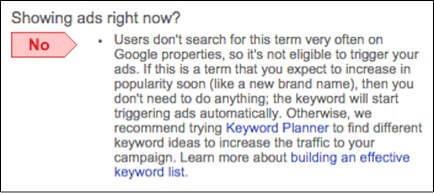Need To Grow Your PPC Account? Look To The Search Queries
Many paid search marketers use Search Query Reports to identify negative keywords, but columnist Matt Umbro shows that these reports have the potential to do so much more.

One of the most common inquiries I receive from e-commerce clients is how we can garner additional, profitable traffic. Of course, this inquiry can happen at any time during the agency-client relationship, but I want to focus when it occurs after many months of management. To phrase another way, clients want to continue growing after the account has been built and (seemingly) all themes covered.
Expanding into new paid search platforms is a given for growth, but the purpose of this post is to examine an integral part of campaign expansion within AdWords and Bing Ads accounts, the Search Query Report (SQR). We all make use of this report, but I don’t believe advertisers know the true potential it has for account growth.
The most common use for SQRs has generally been to find negative keywords. There will always be terms that can be added as new keywords within existing campaigns and ad groups, but the report is primarily meant to find poor performers for exclusion. However, within dynamic, Shopping, and top-of-funnel campaigns, SQRs are a goldmine for new keywords.
Let’s focus on each campaign type and the specific parameters for expansion.
Dynamic Search Ads
Dynamic Search Ads (DSA) don’t utilize keywords; instead, ads are triggered based upon the user query matching a theme or product on the site. Google claims to use its organic technology to best match the query to the landing page. Often times, the DSA headline will be the designated page title, even in cases like the below example where the headline is 10 characters over the 25 character limit.

A dynamic search ad with a 35 character headline
For better or worse, there is a certain amount of uncertainty with DSAs. Even when negative keywords are liberally implemented, poor queries will still come through. The idea is to have a low enough bid that these poor queries won’t tank performance.
For example, you may have a $0.30 bid and, out of 100 clicks, only receive 2 conversions. Assuming we are charged the full $0.30 each click, our total cost is $30 for a cost per conversion of $15 (30/2). In comparison, a standard text ad campaign may have an average cost per click of $0.70, receive 100 clicks, and garner 4 conversions.
Conversion rate would be better in this campaign, but cost per conversion is higher than the DSA campaign at $17.50 (70/4). All of this to say that we’re willing to bring in (some) poor quality traffic in the short term in order to expand in the long run.
When we review our SQRs, we find the keywords that are converting and look to build new campaigns. Some new campaign opportunities are going to be easy to find. Let’s say we see queries around the theme “brown oval coffee tables” that have converted 5 times over the last 30 days for a 5% conversion rate.
We know the landing page is relevant to the query, so we would look to create a new campaign around this theme (or create a new ad group in an existing campaign). Along with the converting DSA queries, we can expand our keyword list in this new campaign to capture a greater portion of the qualified traffic.
Other queries can lead to more of a grey area. We may find that the query “reeve mid-century oval coffee table” converted once in the last 30 days, spent $1, saw 2 clicks and 3 impressions. Efficiency wise, our conversion metrics are great. However, since this query and associated variations are so niche, putting these keywords into their own campaign may trigger “low search volume.”

Low search volume notice
In essence, our goal to create a more targeted campaign could potentially hurt us. We would be removing a converting query from the DSA campaign to place in its own campaign that may not receive impressions. Most converting queries will lend themselves to stand alone campaigns, but for ones that appear to be “one-off” converters, it’s best to keep them as is in the DSA campaign.
Shopping
Many of the same principles discussed for Dynamic Search Ads apply to Shopping campaigns as well. There aren’t as many irrelevant queries with Shopping, but keywords are still absent. The queries found in Shopping campaigns allow advertisers to see what shoppers are searching and in turn create text ad campaigns.
By adding text ads, advertisers will get double the exposure for queries. In the example below, ATG Stores has both text and Shopping ads.

An advertiser with both Shopping and text ads
Another source of expansion in Shopping campaigns is the Item ID report located in the Dimensions tab. This report shows click and conversion metrics for all products shown in the ad units.
Whereas looking at the Shopping SQR would show which queries converted, the Item ID report tells us which products were clicked (similar to a destination URL report). For example, the term “Verilux lamps” may be a great converter, but the ad showing the product with the ID “VD01AA1” is getting those converting clicks. A text ad campaign around top performing IDs would be valuable to test.
Top Of Funnel
Though top of funnel (TOF) campaigns contain keywords, they tend to be broad since they target those in research mode. For example, we would bid on terms such as “coffee tables” and “coffee stands” instead of “oval coffee tables” or “mahogany coffee tables.”
These more specific queries would get their own campaigns with highly relevant ad copy. In turn, terms like “oval” and “mahogany” would be negative keywords in the TOF campaign, as we want to ensure the specific queries trigger the correct ads.
Our TOF campaigns are a great source of new keywords since we’re allowing leeway for expansion. The goal is that we’ll find queries we hadn’t thought of that will allow for new campaigns. Let’s say we find a common theme around “rustic coffee table” keywords.
Not only can a new campaign be created, but also potentially a new landing page if this category isn’t on the site. If the merchant doesn’t sell these products, we can either add “rustic” as a negative keyword or discuss the possibility of offering this inventory (which would involve a much larger discussion).
Final Thoughts
Search queries are one of the most important aspects of PPC, yet they are still underutilized when it comes to account growth. It’s amazing how actionable SQRs can be. Branching into additional PPC platforms is necessary for new audiences, but don’t discount how much growth can be gleaned strictly by assessing your search queries.
Contributing authors are invited to create content for Search Engine Land and are chosen for their expertise and contribution to the search community. Our contributors work under the oversight of the editorial staff and contributions are checked for quality and relevance to our readers. The opinions they express are their own.
Related stories
New on Search Engine Land